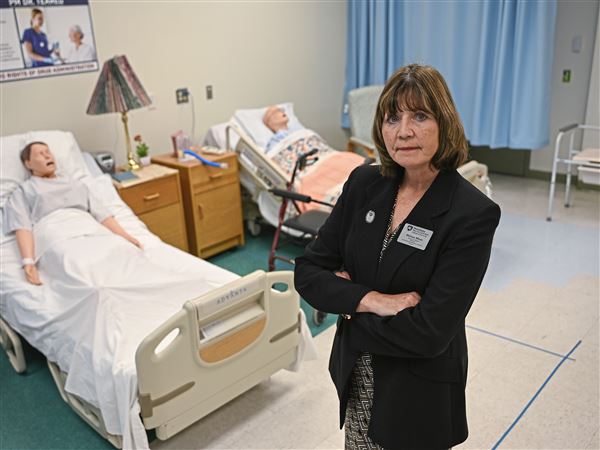About a week before Valentine's Day, with traditional construction-paper hearts hanging overhead, sixth-graders at Fort Cherry Elementary in McDonald got ready for class by sitting at their desks, saying hello to their friends and flipping up the lids of their laptop computers.
They had textbooks, too, but the primary tools science teacher Dave Narigon used that Tuesday afternoon were wireless Internet computers only slightly larger than a schoolbook. He asked the students to search a Web site for information about Galileo and other famous astronomers.
"When the laptops are out, they're definitely focused on what's in front of them," Narigon said, nodding toward his unusually quiet class.
Pupils throughout the Fort Cherry district have been using laptops in class since September. During the previous summer, the school board agreed to spend $112,000 for two mobile computer labs, one for the high school and the other for the elementary center. The labs have become popular among pupils and teachers who appreciate the benefits of using a computer as a handy classroom resource.
Mobile laptops may be rare among other Washington County school districts, but several administrators, including Superintendent Robert Dinnen, who holds doctorates in education and information technology, convinced the board of their educational value.
Teachers have been finding value in the labs and devising creative ways to integrate the technology into their lessons. For example, in addition to researching astronomers, Narigon has used the wireless Internet service to show students up-to-date photos from the Mars rovers.
Elementary art teacher Kimberly Weaver was skeptical about the laptops at first, but she successfully has used them to show her young pupils examples of Renaissance paintings. Next year, she plans to introduce them to computer graphic design.
Biology teacher Jeremy Dawson's 10th-graders have used the laptops to research genetic diseases. By bringing computers to his classroom rather than going to one of the high school's three stationary computer labs, Dawson did not have to give up the comfort of his classroom, which contained many of his other teaching materials.
One of Dawson's students, Patrick Rutledge, 16, said he used a computer at home, and according to some teachers, he is not alone. Most of their students, they said, are proficient Internet users.
Sixth-grader Taylor Whoolery, 11, said she liked using the laptop in class because it gives her independence. "The teacher tells you what to do, and you can go at your own speed," she said.
The computer savvy demonstrated by even young students should not be surprising since the district now has 500 computers, including 48 laptops in the mobile labs. Last year, the schools spent $297,000 on new computers, software and other technological upgrades, said Paul Sroka, the district's business manager.
"For a small rural district, we have made tremendous strides," he said.
Technology Director Jack Okorn, who trains teachers to use the laptops, emphasized that computers were helpful but never could replace real-life teachers. "It's a tool, just like a textbook or a chalkboard," he said.
According to high school librarian Linda Perkins, computers will not replace books, either. "Once students get used to using the Internet, they'll find there's information there, but it hasn't replaced the book," she said. "The best part of man is still on the shelves."
First Published: February 15, 2004, 5:00 a.m.













